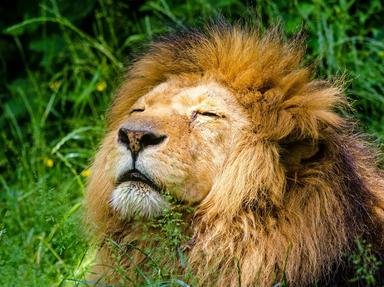Quiz Answer Key and Fun Facts
1. What is the scientific name of the banded mongoose?
2. Which among the following species is closely related to the banded mongooses?
3. In what continent or continents can the banded mongooses be found?
4. Banded mongooses are obligate carnivores
5. Banded mongooses forage together and share the food equally between themselves.
6. How do dominant males in the pack ensure that they father the most offspring?
7. In what time of the day the banded mongooses becomes most active?
8. Within a group of banded mongooses only the dominant pair breeds.
9. Banded mongooses are altricial, what does this statement means
10. Which of the following statements describes the symbiotic relationship between banded mongooses and warthogs?
Source: Author
Popramah3
This quiz was reviewed by FunTrivia editor
rossian before going online.
Any errors found in FunTrivia content are routinely corrected through our feedback system.
